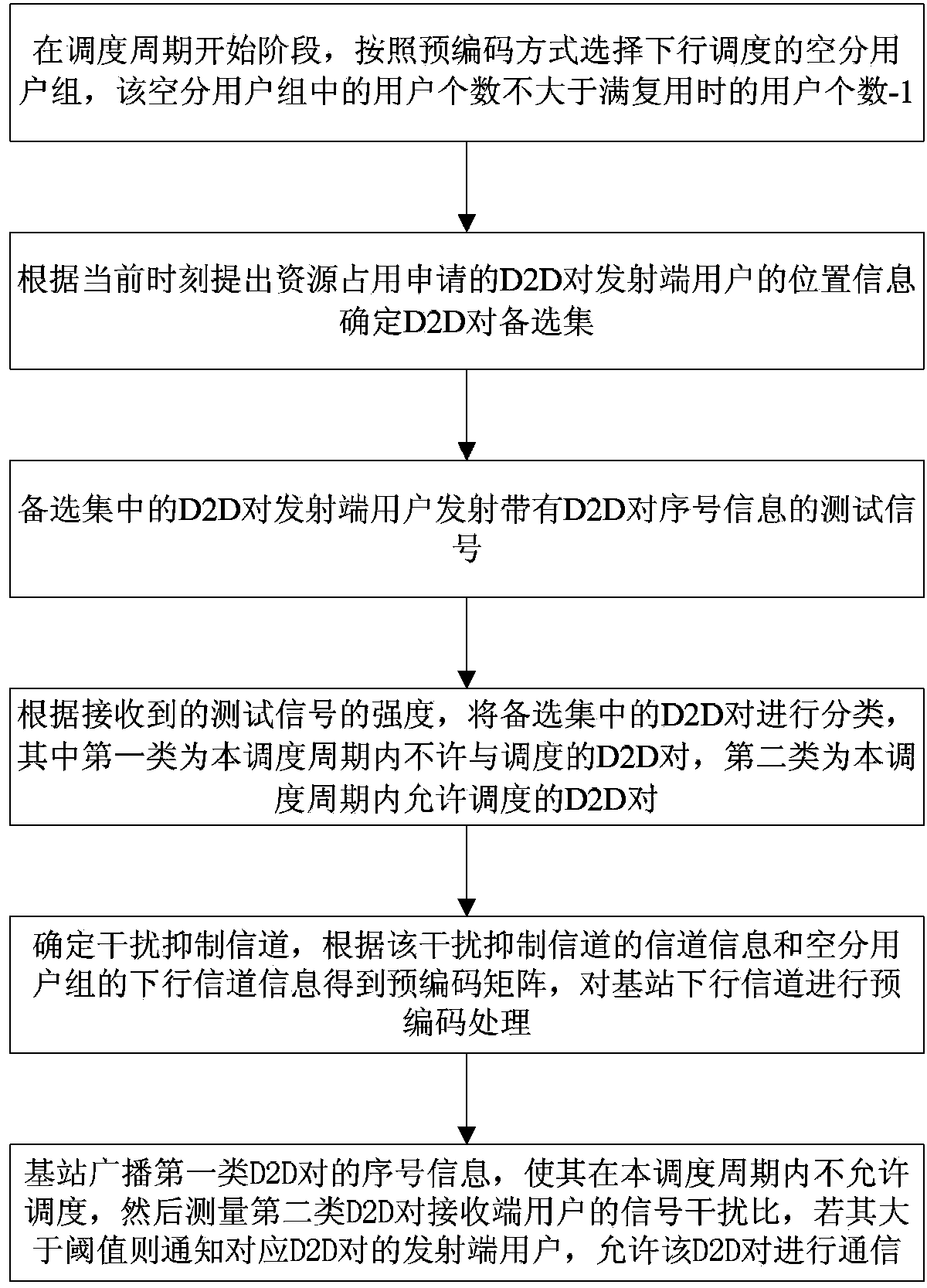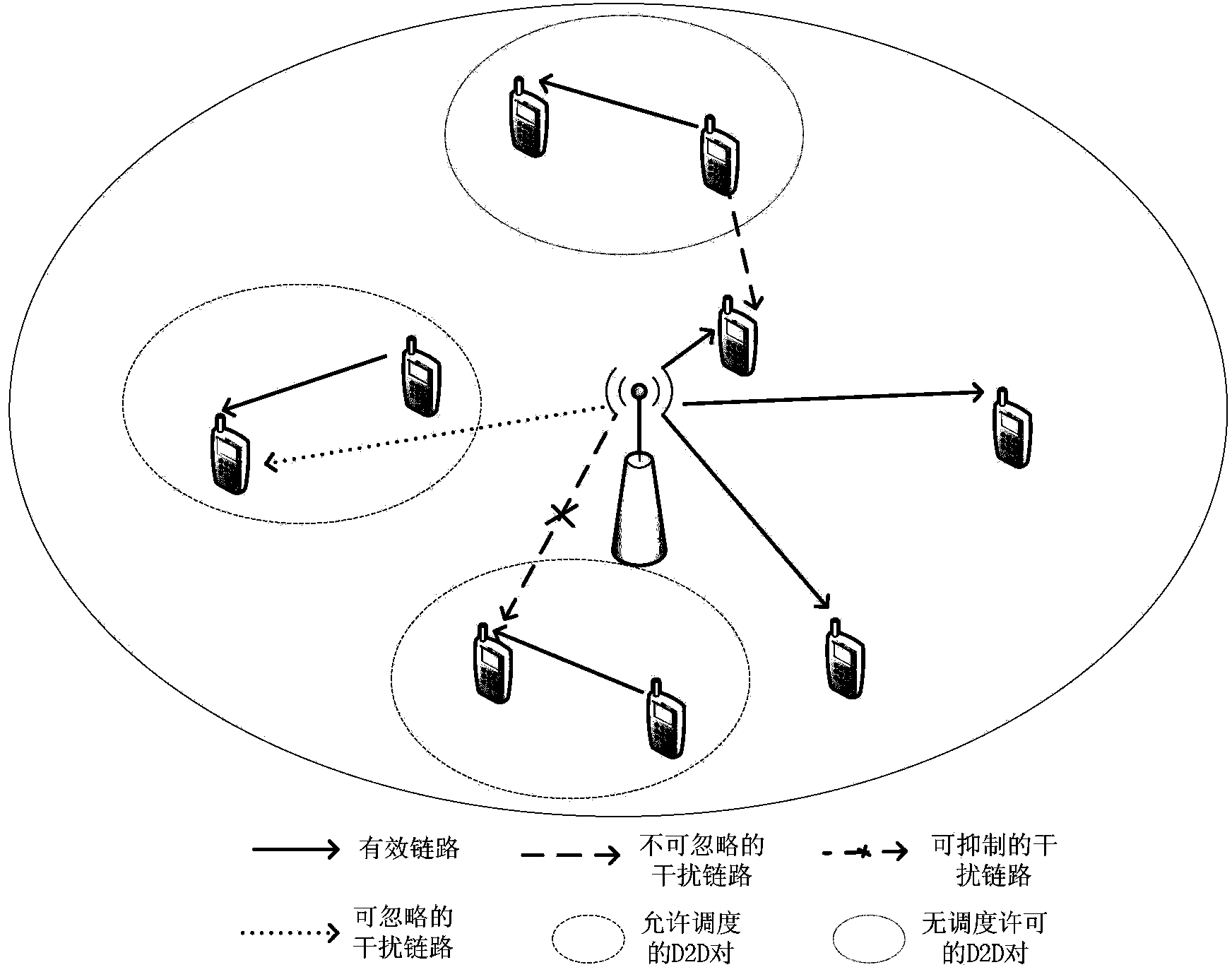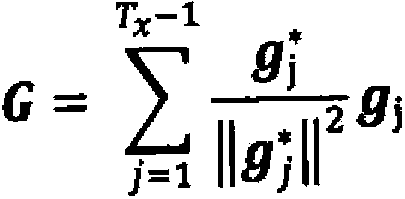D2D pair user scheduling method based on MIMO precoding in cellular district
A cellular cell and user scheduling technology, applied in space transmit diversity, electrical components, connection management, etc., can solve the problems of reducing the flexibility of D2D pair distribution and reducing the coverage of base station signals, so as to reduce communication link interference and increase The effect of flexibility
- Summary
- Abstract
- Description
- Claims
- Application Information
AI Technical Summary
Problems solved by technology
Method used
Image
Examples
Embodiment
[0024] Taking a certain community as an example, the base station is equipped with 4 antennas, and the users of the community and the D2D pair users are equipped with 1 antenna. Only the slow-changing channel with a center frequency of 2G and a bandwidth of 15kHz is discussed, and the channel model from the base station to the user adopts the Rayleigh fading model. , D2D uses the Rician fading model for the user's transceiver channel, and the precoding method is zero-forcing precoding under a complete channel state. Explanation of symbols: Bold capital letters Indicates matrix, bold lowercase letters Represents a row vector whose dimension is 1×Tx, (·)’ represents matrix or vector transpose, (·) * Represents a matrix or vector conjugate transpose.
[0025] Using this method to schedule D2D users, the specific steps are as follows: figure 1 shown, including the following steps:
[0026] Step 1. Since the cell users have a higher scheduling priority, the impact of D2D on t...
PUM
 Login to View More
Login to View More Abstract
Description
Claims
Application Information
 Login to View More
Login to View More - R&D
- Intellectual Property
- Life Sciences
- Materials
- Tech Scout
- Unparalleled Data Quality
- Higher Quality Content
- 60% Fewer Hallucinations
Browse by: Latest US Patents, China's latest patents, Technical Efficacy Thesaurus, Application Domain, Technology Topic, Popular Technical Reports.
© 2025 PatSnap. All rights reserved.Legal|Privacy policy|Modern Slavery Act Transparency Statement|Sitemap|About US| Contact US: help@patsnap.com



